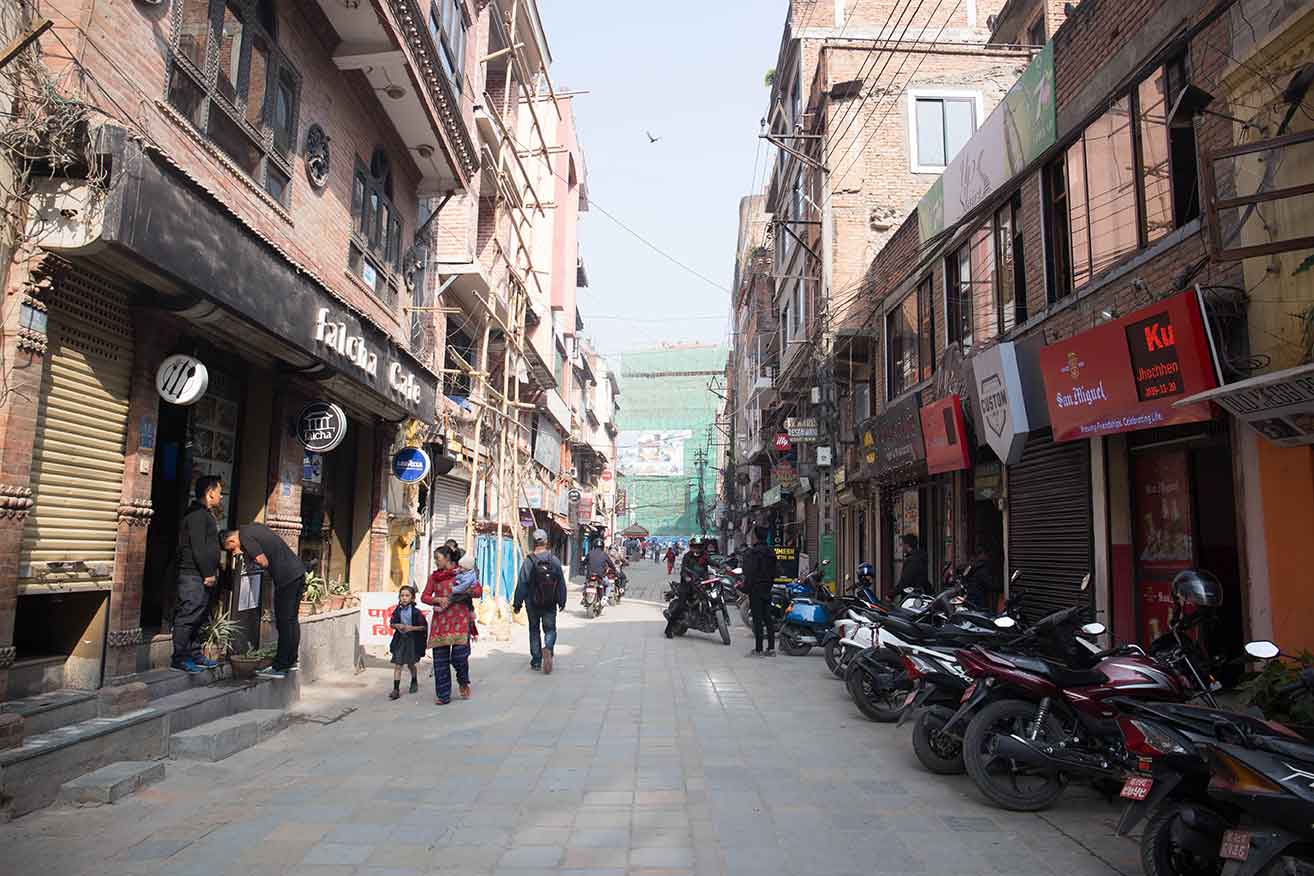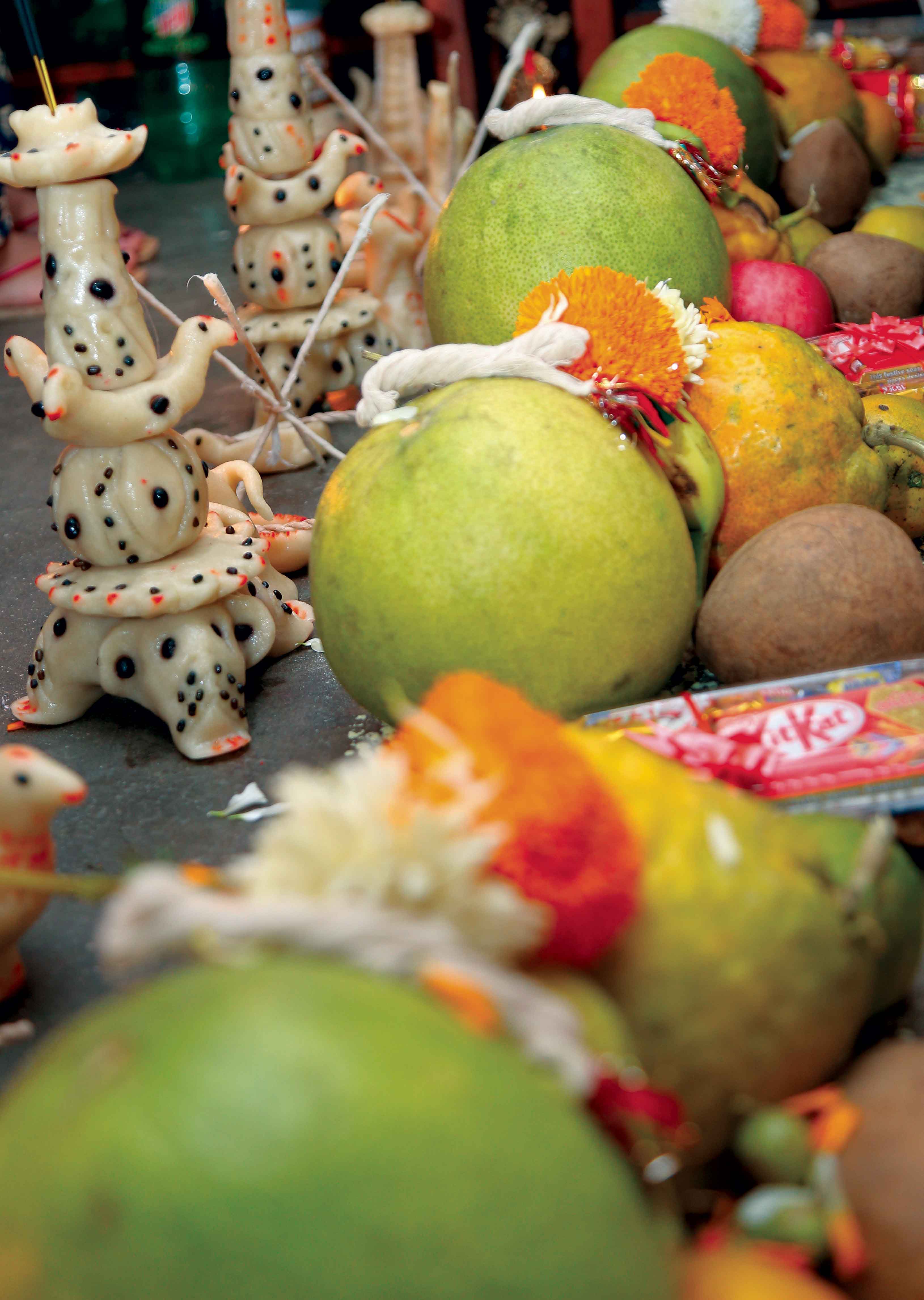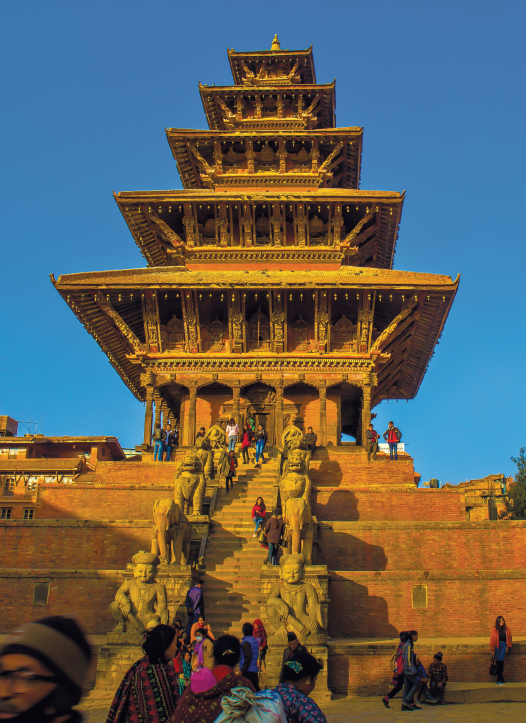The image of the potbellied, elephant headed deity seen in every nook and corner of the Kathmandu Valley as well as in other parts of Nepal is none other than the very popular deity Ganesa. He is worshipped as Vighnesvara, the remover of obstacles. Different legends have different interpretations regarding the birth of this deity. The Lingapuranastates that he was created after a request by the gods to Lord Siva, who were often harassed by the asurasand rakshasa,or demons, who had acquired many boons from Lord Siva to become more powerful than the gods. In answer to their request Siva created Vignesvara, who was born from Parvati to assist the Devas and other good beings in their endeavors to accomplish and to remove the obstacles of all being with good intentions. The most popular story about Ganesa’s origins is narrated in the Siva-Purana,and tells how Vignesvara was born from Parvati’s wish to have a companion with her during the times her consort, Siva, was away for long periods of meditation and other tasks. Taking advice from her companions Jaya and Vijaya, she created him out of her own body, a strong and beautiful loyal companion. On one such incident, the handsome Vignesvara was guarding his mother’s private chambers and Siva asked for access. Not knowing who Siva was, he refused, and in fury at being denied access to his wife, Siva cut off the head of the attendant who had refused him entry to Parvati’s chambers. Later, after learning that this was his own son, Siva ordered the head of the first living creature seen to be fixed on the neck of his beheaded son. Thus the story of how Vighnesvara got his elephant head. However the elephant used had only one tusk, providing Ganesa’s other name: Ekadanta, or ‘having only one tusk.’ When Siva saw his elephant headed son, he praised his efforts and bravery and appointed him the commander of his troop, known as Ganapati and Gajanana, or ‘elephant headed;’ in this way Ganesa got his various names.
Ganesa is also famous for being a trickster and having a great sense of humor. He is depicted at the entrance of houses, temples and villages and towns, and also venerated before any ritual or function to grant his auspicious boon and remove all obstacles in the path to completing or accomplishing a task.
His imagery depicts him with only one tusk, seated on a lotus pedestal or on his mount the mouse or sometimes standing and potbellied. The trunk of the elephant head is mostly turned towards the left, only occasionally to the right. He is depicted with four, six, eight, ten and sometimes sixteen arms, though he is mostly seen with four. In his upper right hand he holds the japamala(rosary) and the lower hand is held in abhaya mudra(posture of reassurance). On his left, the upper hand holds the parasu(hatchet) and the lower holds his favorite food, the modaka(laddu). The snake girdle which can be seen around his waist is adopted from the incident when he was offered a lot of modaka by his devotees. Having filled himself, he was returning home on his mount the mouse. It was already dusk and the heavily burdened mouse was moving very slowly, and tripped on a long snake crossing the path. Ganesa fell and his huge belly burst, spilling the modakas out all over the path. He quickly put them back in his opened stomach and picked up the snake and tied it around his belly to secure it and the modakas inside. The moon witnessing this incident found it very comical and laughed aloud. Having heard the laughter, Ganesa felt insulted and hurled one of his tusks at the moon, another narrative that supports him having only one tusk.
In the Kathmandu Valley, the worship of Ganesa is very popular; his images can be seen adorning temples and sometimes free-standing images are installed in alleys, squares and temple courtyards. The four most sacred manifestations of the deity in the Kathmandu Valley are that of Chandra Binayak at Chabahil, Surya Binayak at Bhaktapur, Asoka Binayaka at Maru and Jal Binayak at Chovar. Karya Binayak at Bungamati, Kamal Binayak Temple near Kamal Pokhari, Tangal Ganesh and Kamaladi Ganesh are other of his temples, each worshiped for a different cause. We also find him very often on the beautiful relief panels of Uma-Mahes, where his parents are seated in mount Kailas, Siva embracing Parvati in a very romantic pose. In this relief panel, Ganesa as Ganapati is depicted below his seated parents. He forms the central figure, flanked by the rest of the ganason either side.
The main festival related to Ganesa is his birthday, Ganesa Chaturthi, celebrated on the the fourth day of the bright fortnight in the month of Bhadra (around August- September) according to the lunar calendar. Temples are decorated with lights and garlands of flowers, and the whole day they are thronged by devotees venerating him with offerings of modaka and other goodies, asking for obstacles to be removed from their path towards accomplishment.
The author is a scholar in Nepalese culture, with special interest in art & iconography. She can be reached at swostirjb@gmail.com

A Path through the Past
Left and right, people of all walks of life are walking, chatting, eating, and just plain enjoying life....










